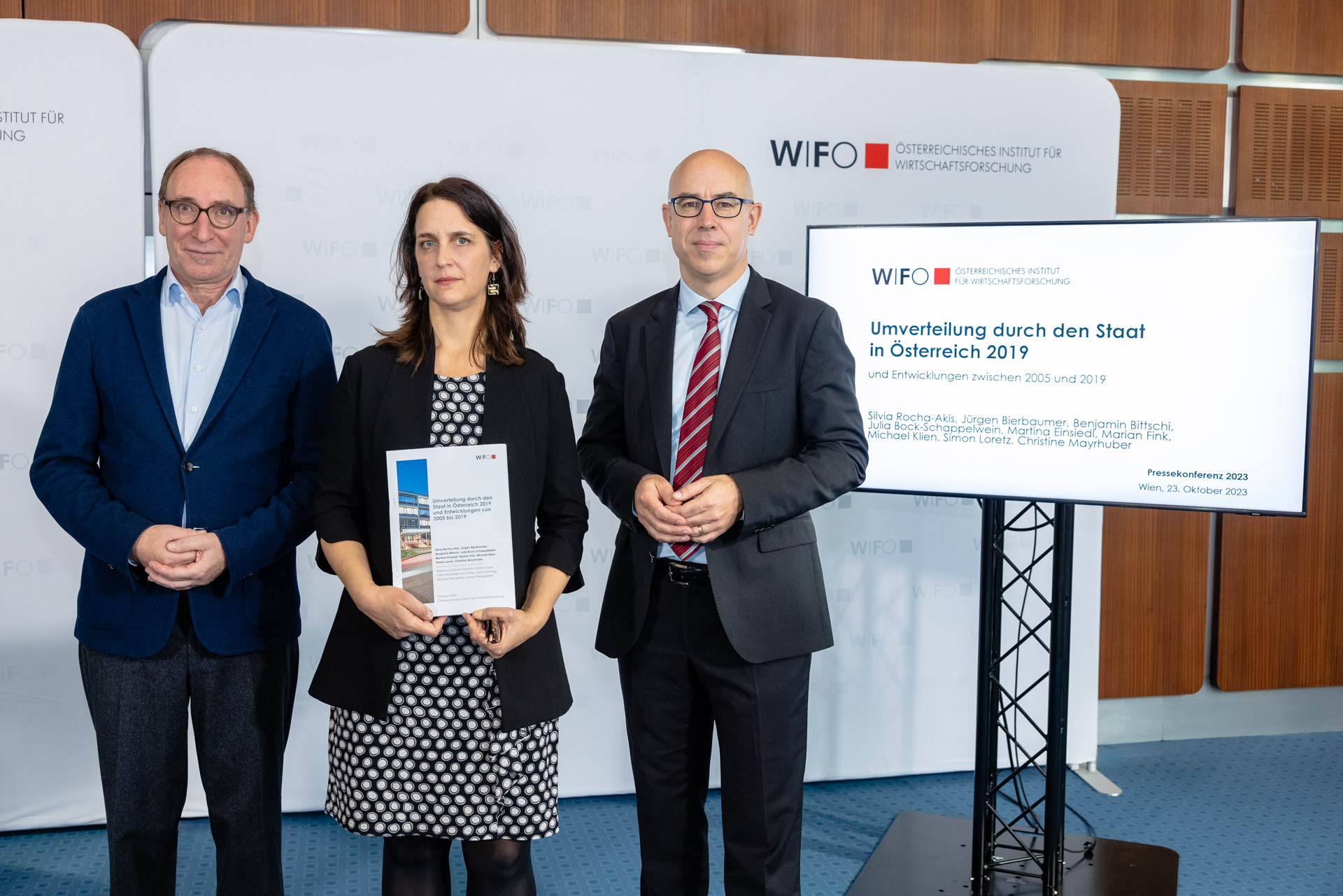
Redistribution by the State in Austria
The research received funding from the Federal Chancellery (BKA), the Federal Ministry of Social Affairs, Health, Care and Consumer Protection (BMSGPK), and the Oesterreichische Nationalbank (OeNB). The WIFO analysis, authored by Silvia Rocha-Akis, Jürgen Bierbaumer, Benjamin Bittschi, Julia Bock-Schappelwein, Martina Einsiedl, Marian Fink, Michael Klien, Simon Loretz, and Christine Mayrhuber, focuses on the examination of 2019 and its developmental trends between 2005 and 2019, using the most recent and linkable data available for Austria. This encompasses the consumption survey conducted every five years.
"This study highlights the significance of social policies in achieving equal opportunities in society. Long-term poverty reduction and provision of improved social opportunities for children are made achievable through state-level redistribution. The study serves as a timely reminder to pay attention to the most vulnerable members of society. "The automatic valorisation of social benefits is an illustration of the various measures being implemented by the government to assist those who require it urgently," stated Social Affairs Minister Johannes Rauch.
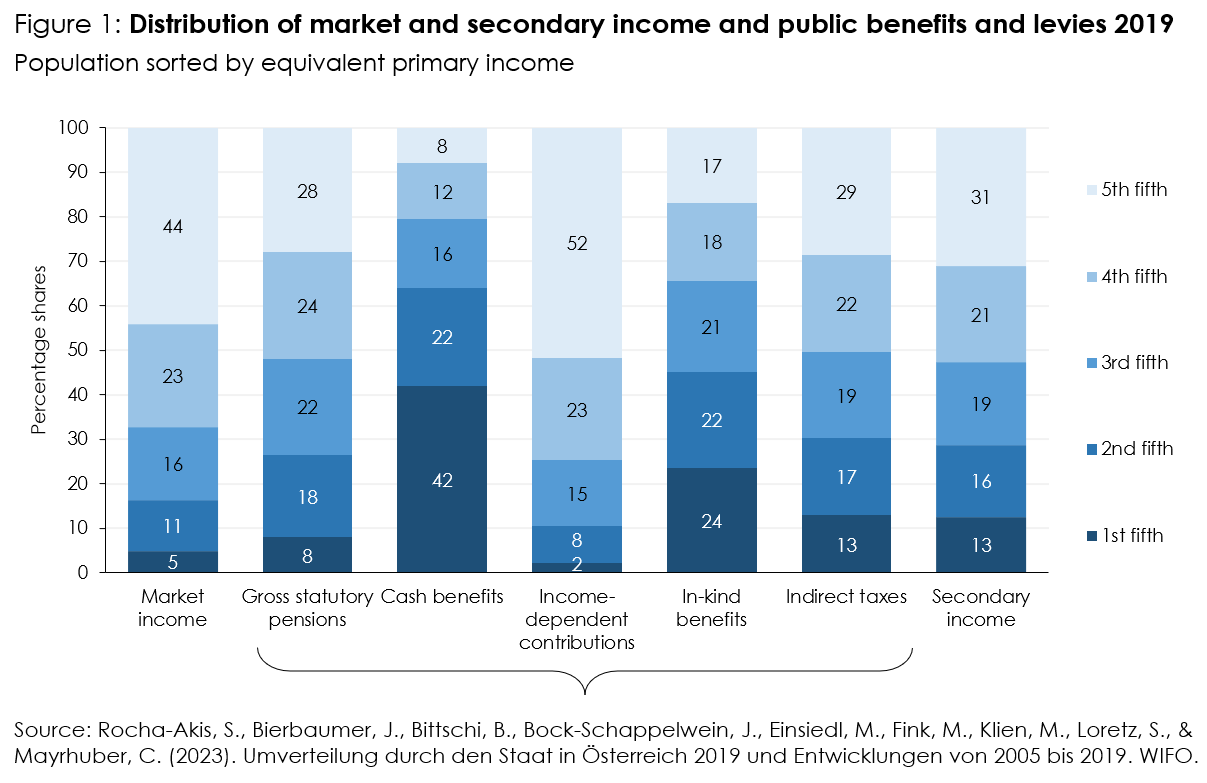
Income inequality, assessed by the Gini coefficient, was cut by half through redistribution from 0.466 (market income) to 0.213 (secondary income). This had a positive effect on the at-risk-of-poverty rate between market and disposable income, which dropped from 33.7 to 13.9 percent of the population. "We observed a similar effect in 2005, 2010, and 2015," stated Rocha-Akis. The closer the value is to 0, the more equal the distribution is, the closer it is to 1, the more unequal it is.
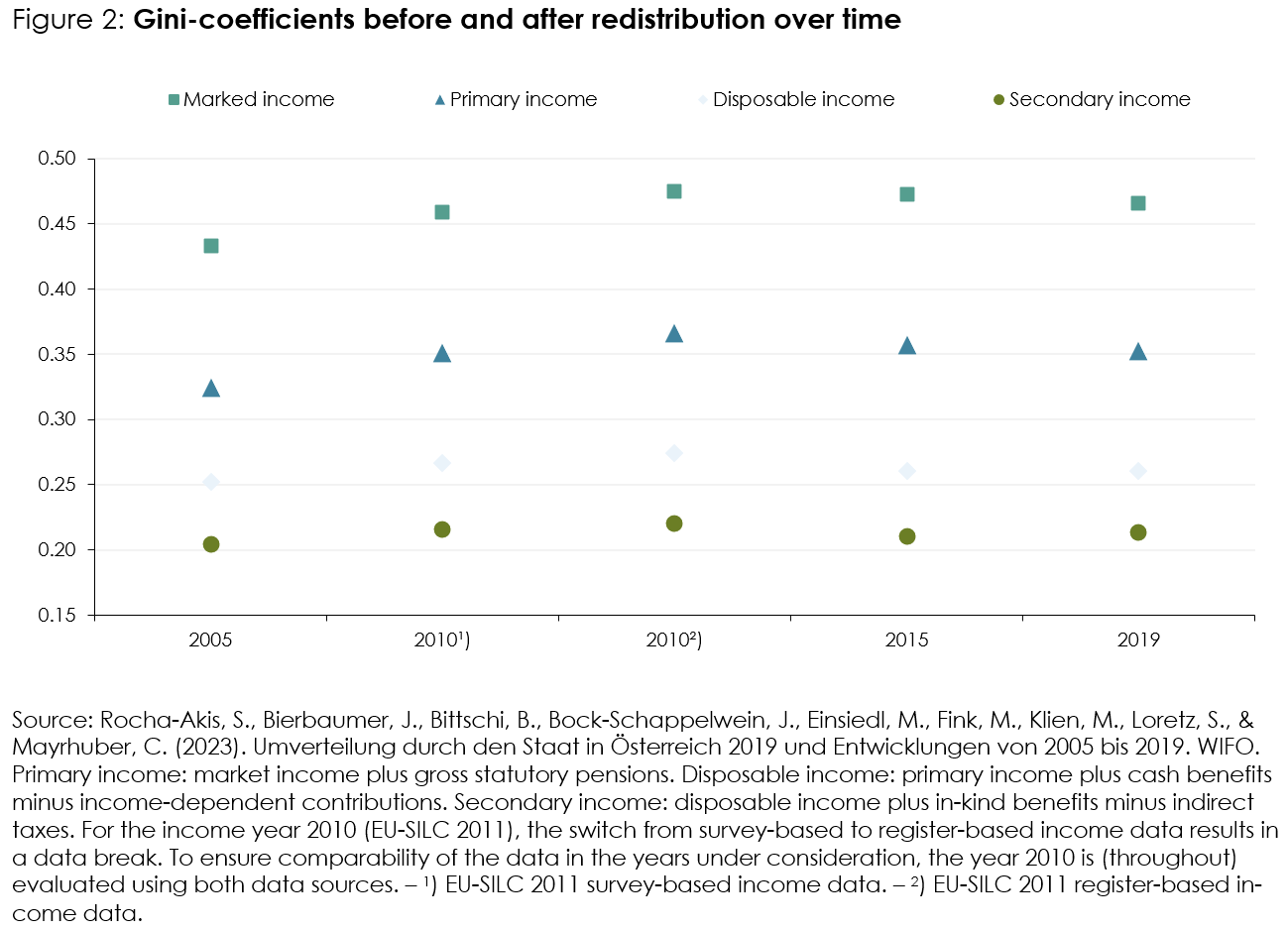
Without pensions, benefits in kind dominate redistribution
Public benefits and taxes contributed to the reduction of income inequality to very different degrees. 38 percent of the redistribution was due to the effect of gross statutory pensions. Welfare benefits in kind came second (33 percent), with health benefits contributing just under a fifth (18 percent), education benefits 10 percent and the remaining benefits in kind (family, housing and unemployment) 5 percent. In third place were direct taxes (22 percent). Public monetary benefits contributed a total of 13 percent to the reduction of inequality, with benefits based on the provision principle (especially direct family benefits and care allowance) accounting for 6 percent and benefits based on the insurance principle (including unemployment insurance benefits) for 5 percent. Benefits according to the welfare principle (especially means-tested minimum income or social assistance) contributed only 2 percent to redistribution. Indirect taxes increased inequality (–6 percent).
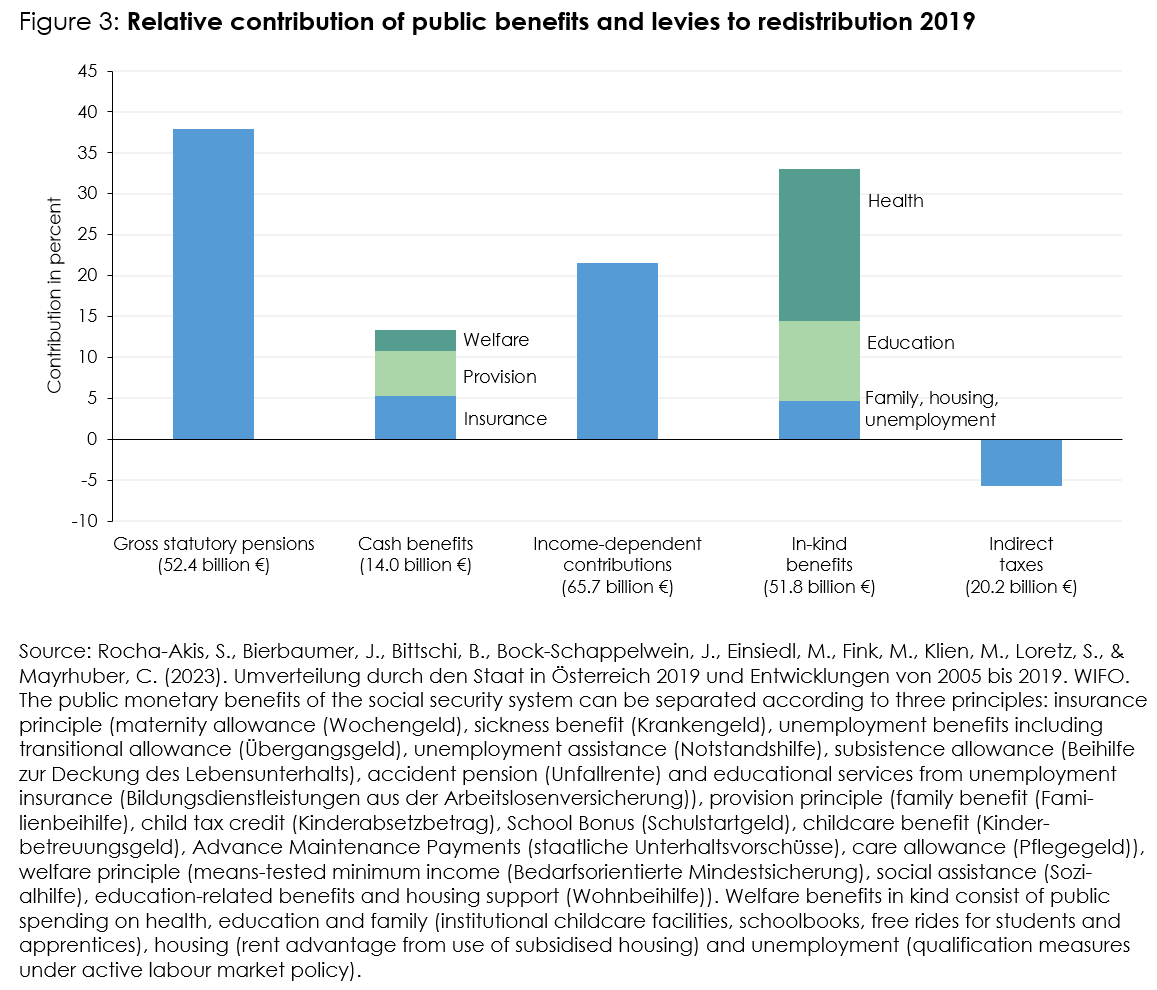
Large parts of the population benefit from redistribution
Excluding statutory gross pensions, the upper half of the income distribution financed the redistribution from which the lower half benefited. Including pensions, there was a positive balance for most income groups, only the top 20 percent were net contributors on average, especially the top 10 percent. "This is a consequence of the high concentration of market incomes and progressive income taxation. Nevertheless, there are both net payers and recipients in all income groups," says Rocha-Akis.
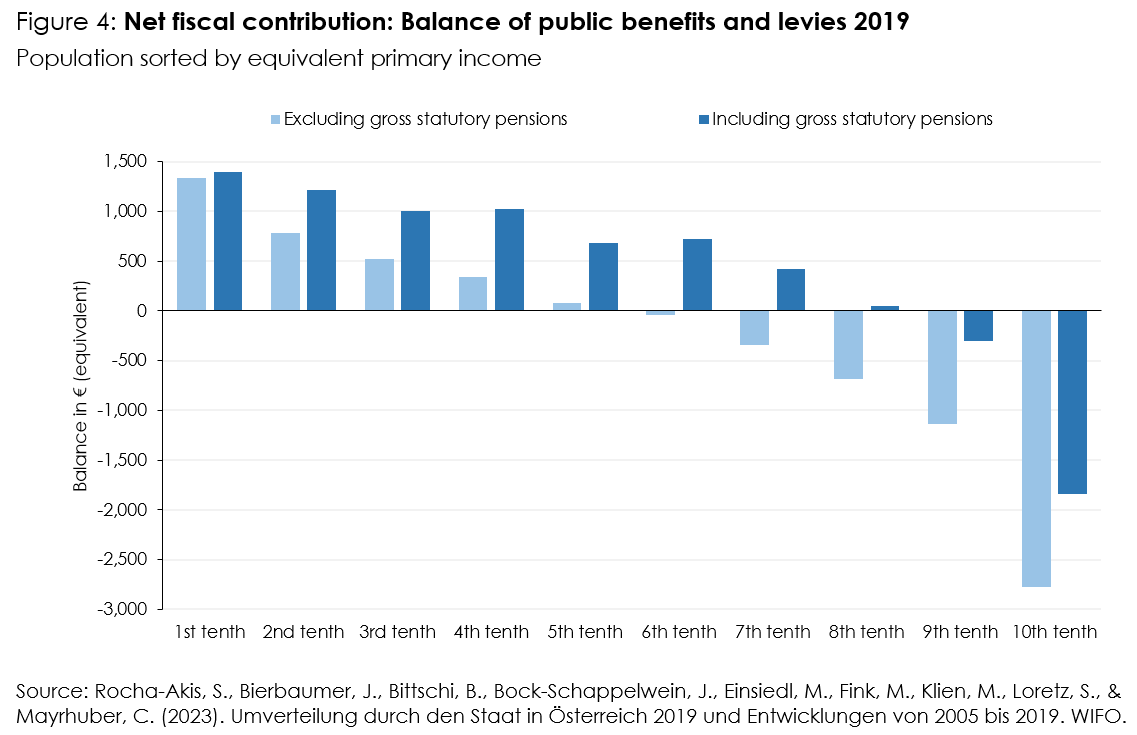
Increasing income polarisation between younger and older households
In the longer term, the significant changes in the percentage of individuals in households with young adults (primary earners aged up to 35) who have children between 2005 and 2010 were remarkable. In 2005, 46 percent of individuals belonged to the lower one-third of the primary income distribution, while in 2010, the figure rose to 58 percent and remained almost constant until 2019. The share in the upper income third had consecutively decreased by more than half from 19 percent (in 2005) to 7 percent (in 2019). This is likely associated with the weakened development of real primary incomes among this group.
In general, there is a tendency for the population in households with main earners under the age of 45 (with and without children) to be found more and more frequently in the lower third of the primary income distribution. The share of the population in households with main earners over 65 years increased from the lower to the middle income third by 8 percentage points. Although the redistribution to households with children dampened these developments, the divergence between younger and older households was also evident along the distribution of secondary incomes.
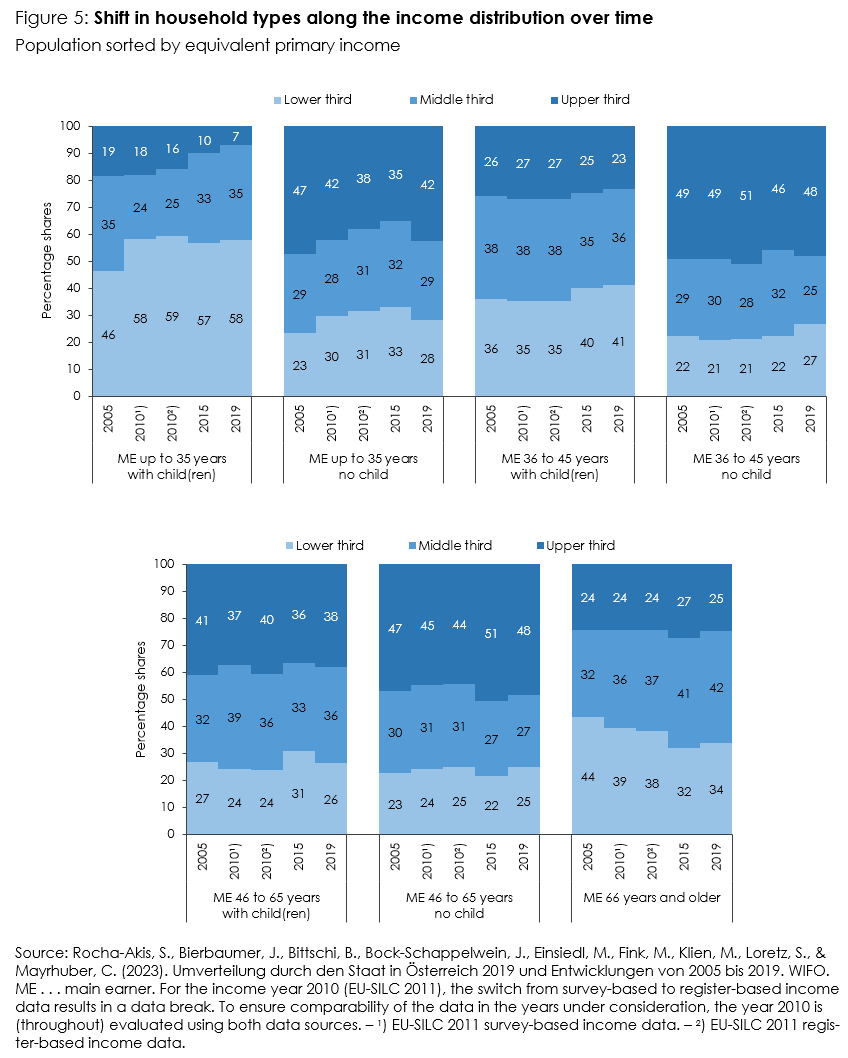
Increasing poverty risk among younger households
Overall, the risk of poverty measured by disposable income tended to decrease between 2005 and 2019 (0.4 percentage points). For persons in young households with children, it increased by +4.6 percentage points to 25 percent; for persons in middle-aged households (main earners between 36 and 45 years) by +4.5 percentage points to 17 percent. In households with main earners over 65, the rate fell by 6.3 percentage points to 11 percent. For the other households, the changes were less pronounced.
The poverty risk of children in younger households has also increased significantly over time compared to children in households with older main earners. In 2019, the share of children at risk of poverty in young households was almost three times higher and in middle-aged households twice as high as in households with a main earner between 46 and 65 years.
Reforms and demographic changes influence redistribution
For households with one main earner up to the age of 64, a longer period of employment, partly due to earlier pension reforms, leads to a strong decrease in the redistribution contribution of statutory gross pensions and a simultaneous increase in the redistribution contribution of direct taxes. In the structure of public expenditure on families, the weight of monetary family benefits decreases, among other things due to the real loss in value of direct cash benefits (11 percent), in favour of expenditure on institutional childcare (more than doubled) and tax benefits (more than tripled; family bonus), from which families in the middle and upper income third benefit more. "With the valorisation of cash benefits since 2023, this development is likely to weaken somewhat. Removing the barriers to access to childcare for low-income households and providing sufficient funds for free or affordable crèche and kindergarten places would increase the redistributive contribution of family benefits and social mobility," says Rocha-Akis.
On the new WIFO thematic platform "Distribution" you will find further scientific papers on topics relevant to distribution policy: https://www.wifo.ac.at/research_priorities/distribution.

